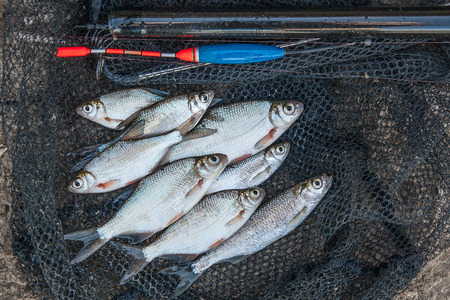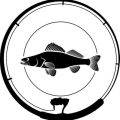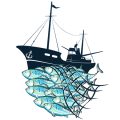Understanding Drift Fishing in UK Waters
Drift fishing has become an indispensable approach for targeting bass and pollack along the diverse British coastline. Unlike static methods, drift fishing leverages the natural movement of the boat driven by wind and tidal currents, allowing anglers to cover more ground and present lures or baits naturally across varying depths. This technique is particularly effective in UK waters, where strong tidal flows and rugged seabeds create prime habitats for both species. Understanding local tidal patterns is crucial; optimal drifts often coincide with moving water during the flood or ebb tide, when predatory fish are most active. Safety remains paramount—UK coastal weather can change rapidly, so always check forecasts and wear appropriate gear. Renowned drift fishing grounds include Cornwalls rocky headlands, the Bristol Channel’s turbulent rips, and the kelp-strewn reefs off North Wales. By mastering drift control and reading tidal movements, British anglers can maximise their chances of hooking into quality bass and pollack while enjoying the dynamic challenges of coastal drift fishing.
2. Essential Tackle and Terminal Gear Selection
When drift fishing for bass and pollack along the UK coastline, your choice of tackle and terminal gear can make or break a session. Both species are renowned for their fighting spirit and cunning, so equipping yourself with the right kit is paramount. Below, we break down the key considerations for rods, reels, lines, and rigs—tailored specifically for British waters and preferences.
Rods: Action, Length, and Power
For bass, many seasoned UK anglers favour rods between 8ft and 9ft6in, with a medium to fast action that delivers both casting range and sensitivity. Pollack, often found in deeper water near wrecks or rocky outcrops, demand a bit more backbone—a rod in the 9ft to 10ft range with a progressive action is ideal for controlling powerful runs. Reputable local brands such as Century and Sonik are highly regarded for their robust construction suited to saltwater drift fishing.
Recommended Rod Specifications
| Species | Length | Action | Top UK Brands |
|---|---|---|---|
| Bass | 8–9ft6in | Medium-Fast | Century, Sonik |
| Pollack | 9–10ft | Progressive | Shakespeare Agility, Greys |
Reels: Robustness Meets Reliability
A smooth drag system is non-negotiable when targeting hard-fighting fish in tidal flows. Fixed spool reels in the 4000–5000 size class are most popular, offering a balance between line capacity and manageable weight. For pollack in rougher ground, some experienced anglers lean towards smaller multiplier reels for direct contact and extra control—brands like Penn and Daiwa are perennial favourites on the UK scene due to their reliability in harsh saltwater environments.
Mainline Choices: Strength Versus Stealth
Braid has become the standard mainline for drift fishing thanks to its low stretch and superior bite detection. Most opt for 20–30lb braid for both bass and pollack, paired with a fluorocarbon leader (15–25lb) to reduce visibility in clear coastal waters. For those who prefer mono, ensure you choose abrasion-resistant varieties from trusted names such as Berkley or Korda—essential when working over snaggy ground.
Mainline & Leader Preferences Table
| Mainline Type | Poundage (lb) | Leader Material |
|---|---|---|
| Braid | 20–30lb | Fluorocarbon 15–25lb |
| Mono (optional) | 15–20lb | Nylon/Fluorocarbon 12–20lb |
Rigs: Local Favourites for Success
The running ledger rig remains a staple among UK drift anglers targeting both species; it allows natural bait presentation while reducing resistance on the take. For pollack near structure, many opt for simple paternoster setups with short snoods to minimise tangles. When using lures (such as soft plastics or shads), Texas or weedless rigs are preferred to negotiate kelp beds without constant snagging—a technique gaining traction around Cornwall and Devon’s rugged marks.
Tactical Insight:
Selecting gear from reputable UK suppliers not only ensures quality but also supports local angling communities. Customising your setup based on the prevailing conditions—tide strength, clarity, and target species—will always set you apart from less-prepared anglers.
![]()
3. Bait and Lure Tactics for British Bass and Pollack
When it comes to drift fishing along the UK coastline, choosing the right bait and lures is paramount for success with both bass and pollack. These predatory fish are highly influenced by their local forage, so adapting your tactics to match what’s naturally available will dramatically increase your catch rate.
Natural Baits: Matching Local Forage
Bass and pollack are opportunistic feeders, often preying on sandeels, sprats, small mackerel, and even shore crabs. For bass, live sandeels or fresh peeler crab mounted on a flowing trace are especially effective when drifted over sandbanks or broken ground. Pollack, meanwhile, favour whole or strip mackerel baits presented near kelp beds or reef edges. Always check what baitfish are present in your local waters during the season—matching the hatch isn’t just a freshwater tactic; it’s equally vital in the salt.
Artificial Lures: Imitation is Key
Lure anglers targeting bass commonly reach for soft plastics that mimic sandeels or whitebait. Slim-profile shads, paddle tails, and weedless rigged worms are favourites for working through dense weed or rough ground where bass prowl. When drifting over deeper marks for pollack, weighted jellyworms and large shads in natural hues like pearl, olive, or blue closely resemble the local baitfish. Metal jigs can also be deadly when worked vertically in tidal flow.
Lure Presentation: Drift-Specific Techniques
The dynamic nature of drift fishing means your lure is always moving—use this to your advantage by adjusting retrieve speed and rod action to mimic injured prey. For bass, a stop-start retrieve with frequent pauses can trigger savage takes. Pollack often respond to a steady lift-and-drop technique near the bottom or around structure. The goal is always to imitate the movement of distressed forage fish native to Britain’s coastal waters.
Fine-Tuning Tactics: Observing Local Conditions
Keep an eye on water clarity and light conditions; bass may prefer more subtle colours in clear water while pollack might home in on brighter patterns in murky seas. Don’t be afraid to experiment with lure size as well—a sudden influx of sprats or juvenile herring can mean downsizing for more consistent results. Ultimately, successful UK coastal anglers are those who not only match the hatch but also adapt presentation and bait choices based on real-time observations of what bass and pollack are actively feeding on.
4. Drift Fishing Strategies: Reading the Tides and Structure
Success in targeting bass and pollack along the UK coastline by drift fishing hinges on a sharp understanding of local tidal movements and seabed features. Both species are opportunistic hunters, taking full advantage of moving water to ambush prey, making your ability to interpret and use these conditions vital for consistent results.
Understanding UK Tidal Flows
British tides are influenced by both the Atlantic and North Sea, resulting in significant variations in current speed and direction. Optimal drift fishing often coincides with the period just before and after peak tidal flow—known as the run—when baitfish are swept from cover, drawing predatory bass and pollack into feeding mode.
| Tidal Phase | Typical Fish Activity | Best Drift Approach |
|---|---|---|
| Flood Tide (incoming) | Bass move onto shallower reefs; Pollack prowl wreck edges | Drift over rising structure towards shore |
| Ebb Tide (outgoing) | Bass follow retreating bait; Pollack stay deeper | Drift away from shore over drop-offs and gullies |
| Slack Water (high/low tide) | Fish less active; holding near structure | Slow drifts or anchor near hot spots |
Locating Productive Structures
The UKs coastline is peppered with reefs, rocky outcrops, sandbanks, and historic wrecks—all prime habitats for bass and pollack. Reefs attract bass during strong runs, particularly at dawn and dusk, while pollack favour deeper wrecks where they can stalk sandeels and small fish. Use up-to-date Admiralty charts or marine GPS to pinpoint these locations, focusing your drifts parallel to key features such as reef edges or the upstream side of a sunken ship.
Top Structure Types for Drift Fishing Success:
- Natural Reefs: Best for bass during spring tides when bait is flushed through gullies.
- Wrecks: Hold big pollack year-round; best fished on neap tides for slower, controlled drifts.
- Patches of Rough Ground: Productive at tidal turns when predators hunt disoriented prey.
Positioning Your Drifts for Maximum Strikes
The key to successful drift fishing is plotting a line that keeps your lures or baits in the strike zone for as long as possible. Start your drift well uptide of your chosen structure, allowing wind and current to carry you naturally across productive ground. Adjust boat speed using sea anchors or drogues to match lure presentation with current speed—critical for keeping soft plastics and jigs enticingly close to the bottom without constant snagging.
Tactical Tips:
- Use waypoints: Mark hotspots with GPS so you can reset identical drifts if action drops off.
- Vary depth: Target mid-water for pollack over wrecks, but hug the seabed for bass on reefs.
- Monitor wind shifts: Sudden changes can alter drift trajectory; be ready to reposition promptly.
By mastering local tides, reading underwater topography, and adjusting your drift patterns accordingly, you’ll consistently put yourself in prime position to connect with quality bass and pollack on every trip along Britain’s storied coastlines.
5. Fight, Land and Care: Handling Your Catch Responsibly
Playing Bass and Pollack from Small Boats
Successfully fighting a hooked bass or pollack is both an art and a test of your angling skills, especially when drift fishing from a small boat along the UK coast. After the initial strike, maintain a firm but controlled tension on your line. Both bass and pollack are renowned for their spirited runs—bass favouring short, powerful bursts near the surface, while pollack often dive hard towards structure. Keep your rod tip high to absorb shocks and avoid giving slack line, which could allow the fish to throw the hook. Use the current and drift to your advantage; if possible, position the boat so you can manoeuvre away from snags or rocky outcrops that pollack in particular love to seek for cover.
Techniques for Safe Landing
When your catch tires, guide it gently towards the boat side. A rubberised landing net is ideal for both species, reducing damage to scales and slime coat. For larger specimens, consider using a wet, knotless net with sufficient depth to cradle the fish securely. Avoid lifting fish directly by the line or hook as this increases the risk of injury or escape. If you’re fishing solo, have all landing gear within arm’s reach before you begin your drift—preparation is key in small-boat angling.
Fish Handling Best Practices
Once landed, wet your hands before handling bass or pollack to protect their delicate skin and mucus layer. Support their body weight fully and avoid squeezing tightly around the gills or abdomen. If unhooking is required, use long-nosed pliers or a disgorger to minimise stress and handling time; barbless hooks can make this process much easier. Quickly photograph your catch if desired and return it promptly if practising catch and release.
Ethical Fish Care & UK Catch Limits
Responsible anglers prioritise fish welfare and sustainability. In UK waters, legal size limits must be adhered to: currently, European sea bass (Dicentrarchus labrax) have strict minimum size requirements (42cm at present) and seasonal bag limits—often two per angler per day during open periods—while pollack also benefit from mindful harvesting due to localised population pressures. Always check local IFCA (Inshore Fisheries and Conservation Authority) regulations before heading out. Where possible, consider releasing larger breeding-size specimens to preserve healthy stocks for future generations.
Summary: Respecting Fish and Fishery
The true mark of a skilled UK coastal angler lies not just in catching bass or pollack by drift fishing but in handling every fish with care and abiding by responsible harvest practices. This approach ensures our beloved fisheries remain productive and vibrant for years to come.
6. Weather and Seasonal Tactics for Consistent Results
Understanding the influence of British weather patterns and seasonal shifts is essential for maximising your success when drift fishing for bass and pollack along the UK coastline. Both species exhibit marked behavioural changes in response to temperature, daylight hours, and prevailing sea conditions, making tactical planning crucial for consistent catches.
Weather Patterns: Reading the Signs
Bass are particularly sensitive to barometric pressure and water clarity. Overcast days with a gentle south-westerly breeze often provide ideal conditions, as reduced light levels make predators more confident and less wary. Conversely, pollack thrive in choppy seas and moderate swells, where their ambush tactics come into play among the turbulence. Avoid calm, bright days when both species tend to retreat deeper or become lethargic.
Wind Direction and Strength
The direction and strength of the wind will dictate not only your drift speed but also the areas fish are likely to congregate. Onshore breezes can push baitfish closer to shorelines, drawing in hungry bass during summer evenings. Offshore winds might flatten surface chop but can make boat control trickier—adjust your drifts accordingly to maintain lure contact with productive ground.
Seasonal Shifts: Timing Your Drifts
From late spring through early autumn, bass migrate inshore following warming waters and abundant prey. Early mornings and dusk periods offer prime opportunities, especially around tide changes. In contrast, pollack peak from late autumn into winter as they patrol deeper reefs and wrecks—their aggressive feeding behaviour triggered by falling temperatures and shorter days.
Choosing Locations by Season
During summer months, target estuary mouths, sandbanks and rocky outcrops where tidal flow concentrates baitfish. As winter draws in, shift your focus to offshore structures and deeper channels where pollack congregate in dense shoals. Monitoring local reports and water temperatures will help refine your plans and increase your chances of intercepting active fish.
Adapting Tactics for Reliable Results
The key to year-round success lies in flexibility: adapt your drift speed, lure selection, and depth according to the day’s conditions. When faced with unsettled weather or dropping temperatures, slow down your presentation for sluggish fish; conversely, capitalise on lively summer tides with fast-moving lures that provoke reaction strikes.
By paying close attention to the nuances of British weather and seasonal cycles—and adjusting your approach accordingly—you’ll consistently put yourself in the right place at the right time for both bass and pollack, regardless of what the elements throw at you.


